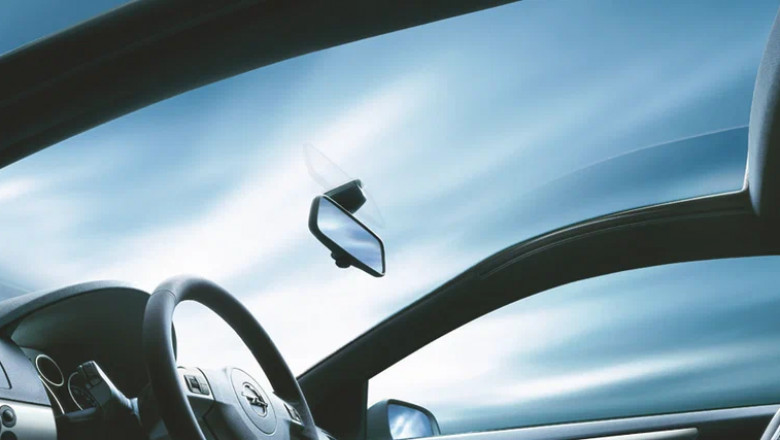views
The automotive glass market plays a crucial role in the overall automotive industry, serving as a key component in the design, safety, and functionality of vehicles. Automotive glass is used in various parts of a vehicle, such as the windshield, side windows, rear windows, and sunroofs. The market has witnessed significant growth in recent years, driven by a variety of factors including technological advancements, increasing consumer demand for safety, and rising environmental awareness. This article delves into the key factors that impact the automotive glass market, highlighting both the challenges and opportunities that influence its trajectory.
Technological Advancements in Automotive Glass
Technological innovations have been a major driver of growth in the automotive glass market. One of the most notable developments is the integration of advanced materials and manufacturing processes that improve the strength, durability, and performance of automotive glass. Laminated glass, for example, has become increasingly popular in automotive applications due to its enhanced safety properties. It is designed to prevent shattering upon impact, reducing the risk of injury during accidents. Additionally, tempered glass is widely used in side and rear windows because of its ability to withstand high pressure and heat.
The rise of smart glass technology is another key factor influencing the market. Smart glass, which can change its transparency or opacity based on external factors such as light or temperature, is becoming more prevalent in modern vehicles. This technology enhances both the aesthetic appeal and energy efficiency of cars. For example, electrochromic windows, which darken when exposed to sunlight, help reduce the need for air conditioning by keeping the interior cooler.
Furthermore, innovations such as heads-up displays, augmented reality windshields, and embedded sensors for driver assistance systems are adding to the demand for advanced automotive glass. These technologies not only improve the driving experience but also contribute to vehicle safety, which is increasingly important to consumers.
Consumer Demand for Safety Features
Safety remains one of the primary concerns for consumers when purchasing vehicles. As a result, the demand for automotive glass products with enhanced safety features is on the rise. Features like laminated windshields and side windows are increasingly being incorporated into vehicles to reduce the risk of injuries during accidents. The rise of advanced driver assistance systems (ADAS), which rely on sensors and cameras embedded in the glass, has further spurred the demand for specialized automotive glass.
In addition, the adoption of electric vehicles (EVs) is influencing the automotive glass market. EVs require specialized glass that helps improve energy efficiency by reducing the amount of heat entering the vehicle's cabin. This is particularly important as automakers seek to extend the driving range of EVs by minimizing energy consumption for climate control. Lightweight glass, such as ultra-thin laminated glass, is being used to reduce the overall weight of electric vehicles, contributing to better fuel efficiency and performance.
Environmental and Regulatory Factors
Environmental concerns and stricter regulations are playing an increasingly significant role in shaping the automotive glass market. Governments around the world are imposing stricter regulations related to vehicle emissions, fuel efficiency, and safety standards. As a result, automotive manufacturers are looking for ways to incorporate eco-friendly materials and energy-efficient technologies into their vehicles. The growing emphasis on sustainability is pushing the industry to adopt alternative materials such as recycled glass and reduce the carbon footprint associated with glass production.
The implementation of regulations like the European Union’s (EU) CO2 emission standards and the Corporate Average Fuel Economy (CAFE) standards in the United States is driving automakers to focus on the development of lightweight materials, including automotive glass. By reducing the weight of vehicles, automakers can achieve better fuel efficiency and lower emissions, aligning with global sustainability goals.
Market Dynamics: Regional Influence
The automotive glass market is also significantly impacted by regional factors, including the growth of the automotive industry in emerging markets. For example, in regions like Asia-Pacific, particularly in countries such as China and India, the demand for automotive glass is increasing due to the expanding automotive production and sales. The growing middle-class population in these regions is driving the demand for passenger vehicles, which in turn boosts the demand for automotive glass.
Conversely, in mature markets like North America and Europe, the demand for replacement automotive glass is more prominent. These markets are seeing an increase in the number of vehicle repairs and replacements due to accidents, wear and tear, and the aging vehicle fleet. The replacement segment remains a significant contributor to the overall growth of the automotive glass market.
Challenges in the Automotive Glass Market
Despite its growth, the automotive glass market faces several challenges. One of the key obstacles is the high cost of advanced automotive glass technologies, such as smart glass and heads-up display systems. The manufacturing of these technologies requires specialized equipment and materials, which increases production costs and, consequently, the final price of vehicles.
Additionally, the automotive glass market is highly competitive, with numerous players vying for market share. Companies need to continuously innovate and invest in R&D to stay ahead of the competition. Fluctuating raw material prices, such as the cost of silica and soda ash, also pose a challenge to manufacturers as they impact production costs.
Conclusion
The automotive glass market is influenced by a combination of technological advancements, consumer demand for safety, environmental regulations, and regional market dynamics. As automakers continue to focus on enhancing vehicle safety, energy efficiency, and sustainability, the demand for innovative automotive glass products will continue to rise. While challenges such as cost pressures and competition remain, the market holds substantial growth potential, particularly in emerging regions and through the development of cutting-edge technologies. The ongoing evolution of automotive glass will be crucial in shaping the future of the automotive industry.






















Comments
0 comment